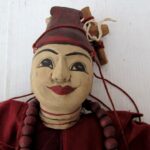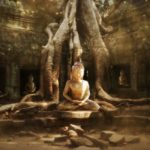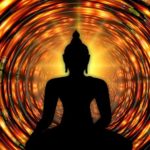Recent Comments
- Vajragoni on Speeding-forth in All Directions
- Scott on Speeding-forth in All Directions
- Vajragoni on The Tathāgata’s Dharma-body
- Ardent Hollingsworth on The Tathāgata’s Dharma-body
- Jim on The Black Dragon Eye Mandala: A Singular Focal-point of the Unmoving Principle
-
Recent Posts
Categories
- A Darkness Visible
- A Docetic Assessment
- A Mystical Odyssey through the Sagathakam
- Akṣayamatinirdeśasūtra
- Akṣhobhya’s Pure Land
- Ālaya-vijñāna
- Anūnatvāpūrṇatvanirdeśaparivarta
- Ariyapariyesanā Sutta
- Ascending the Noble Mountain of Primordial Perfection
- Asceticism
- Ashtavakra Gita in Light of the Unborn
- Audiobook
- Bankei Zen
- Beyond the Ascent
- Beyond the Rainbow Body
- Black Dragon Eye Mandala
- Bodhicitta
- Buddhism’s Black Holes
- Buddhist Anecdotes
- Buddhist Hells
- Buddhist Meditations on the Tarot
- Chuang-Tzu
- Contemporary Musings
- Ḍākiṇī
- Dāsbodh
- Dharmakaya Abbey
- Dharmakaya Stick
- Divine Revelation
- Doctrine of the Void
- Dust Contemplation
- Ekacitta: Advanced Studies in Dark Zen
- Entry into the Dharmadhātu
- Eremitical Dhyani Meditations
- Exploring the Book of Revelation
- Gnostikos
- Hsin Hsin Ming
- Journey to the Center of the Mind
- Karma and Rebirth
- Korean Sŏn
- Kulayarāja Tantra—The Motherly Buddha
- Little Office of Our Lady of the Void
- LSD and Psychedelic Buddhism
- Māṇḍukya Kārikā
- Mañjuśrī Teaches Prajñāpāramitā
- Māra and Satan
- Meister Eckhart
- Mud and Water: Bassui Zen
- Mystagogia
- Nirvana
- Notes from the Iron Stupa
- Nothingness in Nāgārjuna and John of the Cross
- Obscure Religious Cults
- Preparation for the Afterlife
- Primordial Qigong
- Reflections on the Saṃdhinirmocana Sūtra
- Spirituality
- Springtime with Tozen
- Terma: A Mind Film by Vajragoni
- The Afterglow
- The Awakening of Faith
- The Bhagavad Gita
- The Book of Bodhi
- The Cloud of Unknowing in Light of the Unborn
- The Diamond Sutra
- The Divine Ātman
- The Divine Liturgy of Vajrasattva
- The Doctrine of Awakening
- The Dragon Mind of Zen Tarot
- The Elucidation of Consciousness
- The Experience of No-Self
- The Great Perfection of the Unborn Mind: A Book of Privy Counseling
- The Heart Sutra
- The Hermit's Den
- The Khaggavisāṇa Sutta: A Rhinoceros Horn
- The Lankavatara Sutra
- The Lankavatarian Book of the Dead
- The Lion's Roar of Queen Śrīmālā
- The Lotus Sutra
- The Mahāparinirvāṇasūtra
- The Naga Chronicles
- The Platform Sutra
- The Ratnagotravibhāgaśāstra
- The School of the Spirit
- The Secret Golden Light of the Unborn
- The Soul
- The Śūrańgama Sūtra
- The Sutra of Primordial Enlightenment
- The Tathāgatagarbhatārā Tantra
- The Udāna
- The Unborn Mind Mythos
- The Unborn Mind Sessions
- The Unborn Odyssey: A Novel
- The Vajrasamādhi Sutra
- The Vimalakirti Sutra
- The Yogasūtras of Patañjali
- The Zen Teaching of Bodhidharma
- The Zen Teaching of Instantaneous Awakening
- The Zen Teachings of Huang Po
- Theologia Mystica
- Tozen Teaching
- Tsung-mi: An Intimate Study
- Unborn I Ching
- Unborn Light Reiki
- Uncategorized
- Vasubandhu and the Absolute
- Wisdom from the Masters
- Wordsworth and Zen
- Yoga of the Manomayakāya
- Zen
- Zuowang
Archives
- February 2024
- January 2024
- December 2023
- November 2023
- October 2023
- September 2023
- August 2023
- July 2023
- June 2023
- May 2023
- April 2023
- March 2023
- February 2023
- January 2023
- December 2022
- November 2022
- October 2022
- September 2022
- August 2022
- May 2022
- April 2022
- March 2022
- February 2022
- January 2022
- December 2021
- November 2021
- October 2021
- September 2021
- August 2021
- May 2021
- April 2021
- March 2021
- February 2021
- January 2021
- December 2020
- November 2020
- October 2020
- September 2020
- August 2020
- May 2020
- April 2020
- March 2020
- February 2020
- January 2020
- December 2019
- November 2019
- October 2019
- September 2019
- August 2019
- June 2019
- February 2019
- January 2019
- December 2018
- October 2018
- August 2018
- April 2018
- March 2018
- February 2018
- January 2018
- December 2017
- November 2017
- October 2017
- September 2017
- August 2017
- May 2017
- April 2017
- March 2017
- February 2017
- January 2017
- December 2016
- November 2016
- October 2016
- September 2016
- August 2016
- July 2016
- May 2016
- April 2016
- March 2016
- February 2016
- January 2016
- December 2015
- November 2015
- October 2015
- September 2015
- August 2015
- July 2015
- June 2015
- May 2015
- April 2015
- March 2015
- February 2015
- January 2015
- December 2014
- November 2014
- October 2014
- September 2014
- August 2014
- May 2014
- April 2014
- March 2014
- February 2014
- January 2014
- December 2013
- November 2013
- October 2013
- September 2013
- August 2013
- May 2013
- April 2013
- March 2013
- February 2013
- January 2013
- December 2012
- November 2012
- October 2012
- September 2012
- August 2012
- May 2012
- April 2012
- March 2012
- February 2012
- January 2012
- December 2011
- November 2011
- October 2011
Meta
Tag Archives: Prajñā
The Puppeteer

“Wise Protector, a wooden puppet strung up somewhere can give a variety of performances, such as walking, prancing, jumping, throwing, playing, and dancing. What do you think? By whose power can the wooden puppet do so?”
Unborn Mind Zen on Vulture´s peak.

Finishing the ritual sharing of the green tea, the Master put down his cup, picked up his staff and pointed at my face. The gesture was so fast and perfectly executed, I failed to see where the staff started and ended up a mere inch in front of my nose as if it had materialized from a seemingly nowhere into a sudden somewhere.
Prajñā

Image by Lori Gardi
- As long as there is something attained, there is so much error rising; when the Mind itself is thoroughly understood, error neither rises nor ceases.
The perennial problem often with zen-adepts is that some form of objective needs to be met—something to strive after and thus something attainable. Mystically this is very faulty reasoning because there really is no-thing out there to be attained, it’s a form of objective fallacy. The great Hui Hai once put this to rest by proclaiming, knowing that there is nothing attainable or achievable is the Self-Realization of the Dharmakaya of the Buddhadharma. Furthermore, Anuttarasamyaksambodhi is thus a Self-Perfection that is beyond both the attainable/ [Un]attainable.
Posted in A Mystical Odyssey through the Sagathakam
Tagged Bodhiprajñā, Heart Sutra, Hui Hai, Prajñā, prajnaparamita, Tozen
Leave a comment
Having Faith in the Tathāgata-garbha

Within this series we have encountered the seven Vajra-points that essentially constitutes the main leitmotiv of the Ratnagotravibhāgaśāstra, which is the core make-up and teachings of the Tathāgata-garbha:
The Dharmakaya of the Buddhadharma

15. Q: It states in The Vaipulya Sutra that there are five kinds of Dharmakaya: The Dharmakaya of the Absolute; the Dharmakaya of merit; the Dharmakaya of the Dharma-nature; the Dharmakaya of Infinite Transformations; and the Dharmakaya of voidness. Which of these is in reference to our own bodies?
A: To arrive at the awareness that Mind can neither be created nor destroyed is the hallmark of the Dharmakaya of the Absolute. To awaken to the realization that Mind encompasses all things is known as the Dharmakaya of merit. Discerning that Mind is not mind and its discriminations is to Self-realize the Dharmakaya of True Dharma-nature. Teaching the Buddhadharma to sentient beings according to their potential (through expedient means) is the Dharmakaya of Infinite Transformations. The comprehension that Mind is neither being nor non-being, formless and imperceptible is the Dharmakaya of the void. Once again, to fully absorb this teaching, remember that it is not something to be achieved. Thus, knowing that there is nothing attainable or achievable is the Self-Realization of the Dharmakaya of the Buddhadharma. Therefore, anyone who assumes that they can grasp and somehow self-accomplish this without Noble Buddha-gnosis are those who uphold such perverted heterodox belief-systems and are thusly anathema to the Way of the Unborn. The Vimalakirti Nirdesha Sutra states that when Shariputra inquired of a devakanya, “What is it that you have attained that has afforded you supernatural powers?”…the devakanya responded, “even though I have not gained or achieved anything in such matters, I am who I truly am in the Unborn.”
Coming in March 2016: Korean Sŏn

Sŏn is the Korean pronunciation of the Sanskrit, Dhyāna. Sŏn is also comparable with samādhi although it takes on a different connotation from our usual rendering. Tsung-mi expounds that it is a comprehensive equation for both samādhi and prajña. Sŏn’s primary task is the recollection of the original Mind Source, one’s own Buddha-nature. One’s awakening in this endeavor is akin to prajña, while the cultivation of this Mind-ground is samādhi. Chinul, whose teachings are the spotlight this series, asserts that samādhi and prajña are constitutive of the threefold training of śīla, samādhi and prajña just outlined.
This great mystery called Mind
When pursuing your Minds true nature, what you review as precious experience born out of decades of trial and error, is all but an illusion.
Posted in Tozen Teaching
Tagged Karma, luminous body, Mind, Prajñā, Unborn, Unborn Mind, Zen
4 Comments
The Generation of the Bodhibindu
SIX: THE GENERATION OF THE BODHIBINDU
Beloved and Immaculate Arya Tārā is the Sacred Vessel through which the Buddha-potential originates and is nurtured. She is ARYA—the Noble Liberator—and her Blessed Bodhi-Womb—GARBHA—houses the Self-Liberating activity. Like a mother she knows her children’s potential as Buddha-nature, and her activity as the Holy Matrix houses the Primordial Wisdom (Prajñā) that removes the veil of ignorance from all future children destined for Tathagatahood. She is the Mediatrix of all Buddhaic Blessings and as such embodies the bodhipower of all Buddhas. She is Arya Tārā—the Tārā beyond time, space and all conceptualizations. Her Bodhi-Womb is made of Unborn Light—transparent—yet always Vibrantly Productive in its Luminous Actuosity. As the Hallowed Ground of the Tathagatas she is the very nature of the Dharmadhatu Itself.
Posted in The Tathāgatagarbhatārā Tantra
Tagged Abhisambodhi, bindu, Bodhi, Dharmadhatu Itself, EVAṀ, Mediatrix, Prajñā, Tathagatas, upaya, Vishvavajra
Leave a comment
Tozen: Dharma from the other shore…3
Master, please explain the difference between Enlightenment and practice [of it],…and the difference between Prajna and Prana?”
Posted in Tozen Teaching
Tagged Avatamsaka Sutra, deathless, Dharma, India, Prajñā, Prana, Tozen
Leave a comment
Foundations: The Tathāgatagarbhatārā Tantra
The Vajrayana essentially follows the old principle of hermetic magic, ‘as above so below’. By manipulating the mundane consciousness, it effectively induces change on the spiritual level. By reconstructing the mundane environment as a reflection of the Enlightened Mind, it imbues ordinary mind with a sacred quality. Although this reconstruction of the normal channels of consciousness is by no means an easy affair. One can easily get burned in the practice of Tantra. Unless one’s karma is somehow immaculately pristine and devoid of adventitious defilements—an unlikely scenario—then long time preparation in the foundation of Sutrayana, as well as many years spent experiencing Dhyāna and Deep Samādhis, is a good prerequisite before embarking on the spiritual trek of the Vajrayana.
Posted in The Tathāgatagarbhatārā Tantra
Tagged Arya Tārā, Completion Stage, Diamond Being, Five Wisdom Tathagatas, Generation Stage, Govinda, Holy Matrix, Luminative Princple, Prajñā, Sacred Gnosis, Sādhana, Tantric Body, Tathāgatagarbha, Ten Stages, upaya, Vajradhara Buddha, Vajrasattva
Leave a comment
